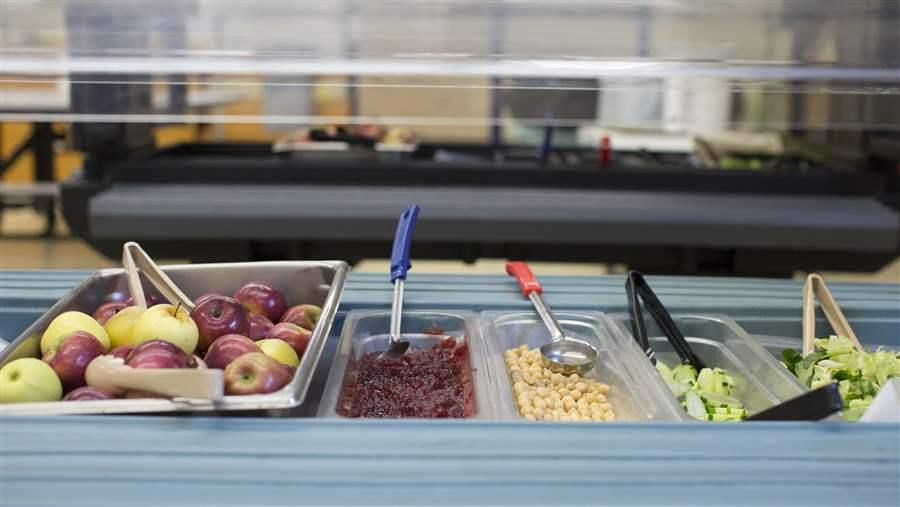Schools Tap Local Farms for Nutritious, Locally Sourced Ingredients
For National Farm to School Month, parents, farmers join kids for lunch, emphasize healthy eating

Farm-to-school programs supply fresh fruit, vegetables, meat, and dairy products for students’ meals, supporting good nutrition and lessons about where food comes from.
© The Pew Charitable Trusts
Across the country this month, kids are making space at their cafeteria tables for special guests as National School Lunch Week (Oct. 9-15) and National Farm to School Month are celebrated. These annual events encourage students and families to share meals and give them a chance to meet local farmers whose harvests provide many of the fresh, healthy ingredients.
Fun, educational occasions such as these play an important part in the success of school meal programs. For example, 42 percent of nutrition directors who established school gardens—a popular farm-to-school activity—said that students ate more fruits and vegetables as a result. In general, directors noted that eating habits and meal program participation improved when schools actively engaged children and parents in menu-planning decisions, such as via taste tests and recipe competitions.
Farm-to-school programs support healthier school menus
Under updated national standards for school meals, cafeterias have expanded their nutritious offerings, including more fresh produce, and children are making healthier selections. More than 40,000 schools nationwide have farm-to-school initiatives that have helped build student and community support for menu changes and lowered meal program costs.
Although farm-to-school programs are not limited to the lunch room, they are most commonly known for serving locally grown and raised foods in meals served to students. In Burke County, Georgia, for instance, produce grown nearby was served at least four times a week during the 2014-15 school year, and students participated in 20 hands-on cooking and food activities.
School kitchen upgrades boost access to local foods
Efforts such as farm-to-school programs to offer more fresh local foods on district menus can be hampered, however, when schools lack the necessary kitchen equipment to efficiently store and prepare them, and areas of the country with shorter harvest seasons face additional challenges. That’s why nutrition directors often prioritize investments in kitchen upgrades, and many have received grants from the U.S. Department of Agriculture to help pay for these tools.
The benefits of even one new piece of equipment can be dramatic. A rural Maine district is able to source about 40 percent of its food from local farms, thanks in part to a blast chiller that allows the kitchen staff to make year-round use of blueberries, tomatoes, and beef and offer more fresh, made-from-scratch menu items. As a result, more students have been drawn to the district’s meals. In Fargo, North Dakota, the purchase of a large roll-in refrigerator allowed an aging elementary school to accommodate larger quantities of locally sourced fruits and vegetables. “With the new equipment, we’re able to regularly have cucumbers, tomatoes, peppers, melons, and other produce grown in the region on our menus,” said Jan Sliper, the district’s former nutrition director.
As families and communities celebrate all that school meal programs do for the nation’s students, the strides made toward fresh, healthy, and local menus should be recognized, too.
Join your child at lunch, enjoy the food and company, share your feedback with nutrition staff, and ask how you can help your school build on this progress.
Stephanie Scarmo leads research on school nutrition programs and policies for the Kids’ Safe and Healthful Foods Project.








